DR12 Twin RowPlanter
- 12 rows with staggered spacings of 36 in., 38 in., or 40 in. (91.4, 96.5, 100, 101.6 cm.)
- Available in MaxEmerge™ 5 row units.
- Choose from Central Commodity System™ (CCS) or non-CCS options
- Mini-hopper or 2-bu row hopper
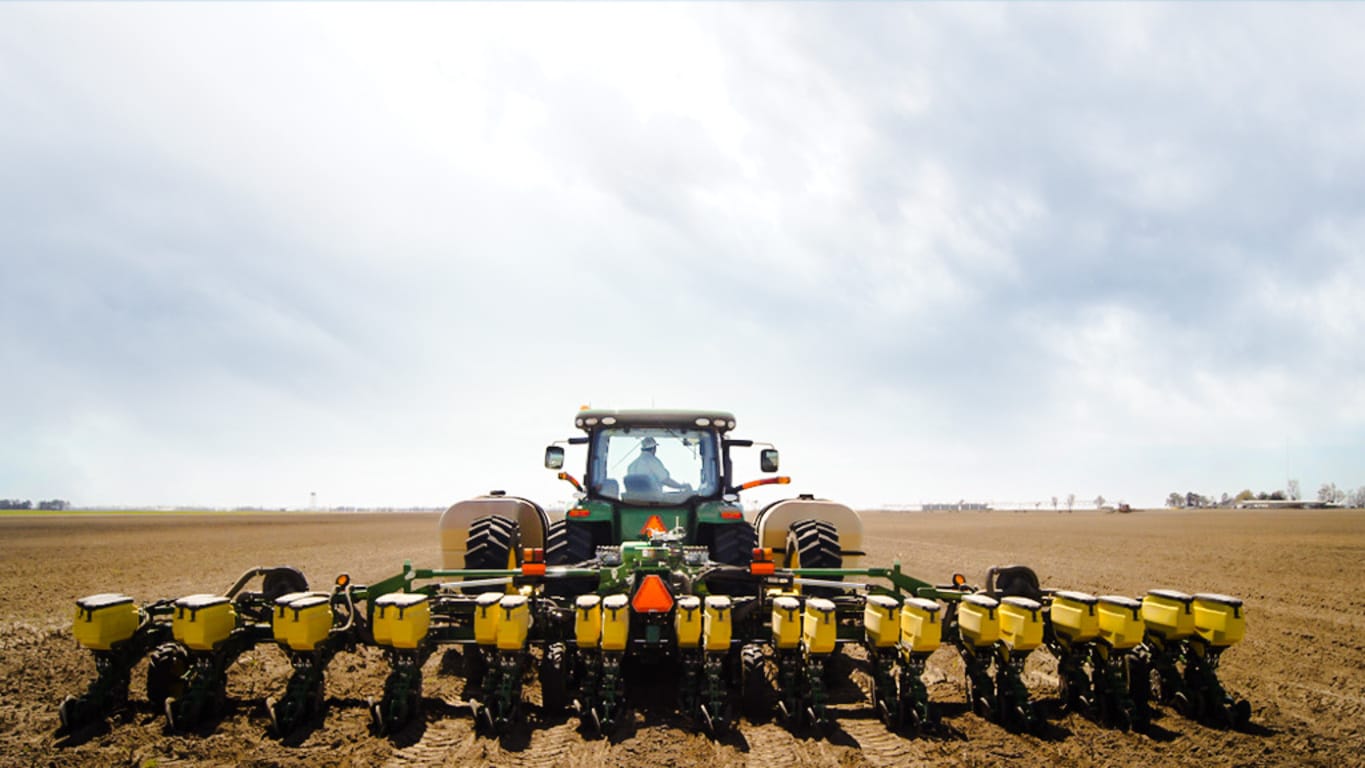
MaxEmerge 5 bundles the best of MaxEmerge XP and Pro-Series™ XP row-units to give you a unique planter solution. With more options and configurations, you’ll get difference-making versatility that easily adapts to your ag management plan.
It starts with optimal seed population that drives yield potential. An improved double eliminated helps achieve your desired population with a ride range of crop sizes. Improved side-hill performance of up to ¼ degree ensures you receive the full value of each seed when planting on terraces or rolling terrain. The vacuum air source from the Central Commodity System (CCS™) tank in the meter provides a debris-free environment for increased meter efficiency.
 MaxEmerge 5 with 56-L (1.6-bu) hopper plus insecticide
MaxEmerge 5 with 56-L (1.6-bu) hopper plus insecticide
 MaxEmerge 5 with mini-hopper on CCS™ machines only
MaxEmerge 5 with mini-hopper on CCS™ machines only
The MaxEmerge family of row-units have never seen a more versatile and efficient design until the MaxEmerge 5. The 5-family row-units improve productivity, increase uptime and lower the cost of ownership like never before.
The MaxEmerge 5 row-unit was designed for improved performance and serviceability.
 Easily access the meter
Easily access the meter
Serviceability and changing crops have always been a focus of downtime and potential seed loss. The MaxEmerge 5 meter (shown on the right) is accessible without having to remove the box. The design allows large hoppers to be cleaned out the same as mini-hoppers, simply by opening the meter dome and catching the seed as it falls out.
 MaxEmerge 5 vacuum seed meter
MaxEmerge 5 vacuum seed meter
The vacuum meter system gently pulls and holds individual seeds to the holes of the seed disk for population control and spacing accuracy, equaling better crop stands and profit. Vacuum seed meters can plant a wide variety of crops and seed types by simply changing seed disks and adjusting vacuum level. Vacuum seed meters are available for planters with MaxEmerge 5 row-units.
Additional features of the vacuum seed meter include:
 MaxEmerge 5 seed pool
MaxEmerge 5 seed pool
The MaxEmerge 5 meter shape has also been redesigned for better seed flow. The mini-hopper design allows the planter to successfully operate on side hills up to 14 degrees.
 MaxEmerge 5 vacuum meter with disk
MaxEmerge 5 vacuum meter with disk
Both the MaxEmerge 5 vacuum meters are equipped with a heavy-duty hub spring and disk latching handle. The spring ensures the seed disk stays properly positioned when operating flat-style seed disks and higher vacuum levels. Proper seed disk positioning means repeatable seed singulation, time after time. The disk-latching handle is designed for easy operation and effortless seed disk changeover. The hub is also machined to tight tolerances to further ensure alignment of metering components.
 Operating speed with seed tube technology
Operating speed with seed tube technology
The vacuum seed meter can operate at faster planting speeds than mechanical meters. However, planting accuracy will be influenced by seedbed conditions and the operating characteristics of the seed meter. Rough seedbeds and fast planting speeds (above 8.9 km/h [5.5 mph]) typically deteriorate seed placement accuracies when using seed tube technology.
The chart illustrates the effect operating speed has on population when using the vacuum meter. The operating band (color area) illustrates how the vacuum meter performs in relation to the desired population (indicated by horizontal line). The width of the band is due to various sizes and shapes of seeds and planting rate variations.
When operating on slopes above 15 degrees, increased or decreased population may result. To minimize this effect, reduce speed and consider using a flat style seed disk with increased vacuum level.
The ProMax 40 Flat Disk is a flat-disk planting solution field-proven to work since 1991.
 Flat-style and cell seed disks shown
Flat-style and cell seed disks shown
The unique cell disk design allows planting a variety of seed sizes without any additional parts or individual meter adjustments. Another advantage of cell-type seed disks is the lower vacuum requirement compared to flat-style seed disks. Lower vacuum levels mean less hydraulic demand from the tractor. Most planting conditions call for a flat disk, if you are limited in hydraulic capacity, cell disks are recommended.
 ProMax 40 Flat Disc
ProMax 40 Flat Disc
The design of the ProMax 40 Flat Disk position allows seed to be released from the optimum position above the seed tube. The flush-face seed tube allows the seed to drop uninterrupted through the tube.
The ProMax 40 Flat Disk utilizes flat holes and a higher vacuum level to ensure every hole is populated with a seed. A double eliminator gently removes multiple seeds at each hole for precise population control. A knockout wheel makes certain that each hole is clear of any debris after the seed is released from the disk.
 Flat seed disc and double eliminator
Flat seed disc and double eliminator
For difficult to singulate seeds, a flat seed disk and double eliminator is a viable alternative to traditional cell-type seed disks. By design, a flat seed disk requires higher levels of vacuum than a cell-type disk because there is no pocket or cell to hold the seed. The higher vacuum level will pull more than one seed to the holes in the seed disk. The double eliminator is set to cover a portion of the hole in the seed disk and is the mechanism to knock multiple seeds away as the disk rotates.
Double eliminators are required with flat-type seed disks only and should not be used with cell-type seed disks. The knockout wheel is also recommended in conjunction with the double eliminator and flat seed disk to ensure seed is ejected from the disk.
Flat and celled type seed metering disks are available to allow planting a wide variety of seed types.
Mini-hopper row-units, which are used only with the CCS, are compatible only with crops that the CCS is approved to plant.
NOTE: Due to small seed size and low planting populations, sugar beets can be planted with mini-hopper style meters by adding hopper extensions and not using the CCS tank. These hopper extensions can also be used for planting test plots.
 Tru-Vee opener blade
Tru-Vee opener blade
One of the trademark capabilities of John Deere planters has always been the ability of the Tru-Vee openers to provide an ideal seed furrow.
The thickness of the Tru-Vee opener blade is 3.5 mm (0.14 in.) this blade thickness will provide extended wear life.
The MaxEmerge 5 row-unit also provides better Tru-Vee opener bearings for longer life. The double-row ball bearing provides up to three times the wear life as the single-row bearing.
 Hopper shutoff
Hopper shutoff

Also, to help with meter access of 56-L and 106-L (1.6-bu and 3-bu) hoppers the hopper shutoff feature was added. With the shutoff engaged, the meter cover can be opened without first having to remove all the seeds from the hopper. Lever down, the seed flow is on, lever horizontal and the seed flow is off.
 MaxEmerge 5 mini-hopper
MaxEmerge 5 mini-hopper

There are significant changes to the MaxEmerge 5 mini-hopper. One update is the straight feed from the CCS hose to the mini-hopper to ensure a continuous free flow of seeds. This design change reduces the potential for plugging issues with larger seed size and the use of seed treatments. By drawing air from the CCS tank, the vacuum source is cleaner, preventing meter debris buildup.
 Ductile iron-cast shank
Ductile iron-cast shank
Ductile iron casting is a unique high-tech process that produces a single-piece row-unit shank this enables alignment from the seed trench to the closing wheel.
The row-unit head is also designed using the ductile iron-casting process. The row-unit head provides the mating joints between the row-unit parallel arms and the row-unit shank. It is also the upper attaching point for the seed meter and seed hopper.
Ductile iron casting of the row-unit shank and head assembly provides a row-unit that is 25 percent stronger than other competitive welded row-units.
 Rubber tire closing system
Rubber tire closing system
 Cast wheel closing system
Cast wheel closing system
Rubber tire closing systems are used for most conventional, minimum-till, and no-till planting conditions. The spacing between the wheels is adjustable so the closing system can meet the needs of those who want to plant small seeds at shallow depths.
The wheels can also be staggered fore and aft to enhance residue flow. Four levels of spring force are available and are easily set with the integrated T-handle adjustment. A lower force spring can be obtained from parts, if a lower amount of force is required.
Additional closing wheel options include:
 Depth adjustment T-handle
Depth adjustment T-handle

John Deere planters provide consistent seed depth control in all field conditions. Depth control is a function of the Tru-Vee openers, the downforce system, and the gauge wheel assembly.
The gauge wheel itself is made of durable nylon composition with a concave profile. This profile gently firms the sides of the seed furrow, ensuring a well-defined trench. The shape reduces rocks and residue being picked up and thrown onto the drive chains and row-units, and helps to prevent rooster tailing of soil.
The bolt-through design utilizes an open bearing in the gauge wheel that allows an attaching bolt to pass through the wheel to the threaded hole in the gauge wheel arm. This simple bolt-through design provides for a positive attachment of the gauge wheel to the gauge wheel arm and allows quick removal of the gauge wheel for service.
Adjustability of the row-unit is critical to good performance. More available downforce options than any row unit in the industry
 CCS
CCS
CCS seed delivery adds productivity through:
Crops that can be planted with the CCS System include corn, sweet corn, popcorn, cotton, sunflowers, sugar beets, soybeans, and sorghum (milo).
Filling the tanks is convenient due to a central filling location. The staircase and railing provide access to the filling platform between the tanks. Additionally, each tank has an adjustable bin-level sensor to alert the operator when it is time to fill.
A light-emitting diode (LED) fill light package is included on machines equipped with CCS. This feature includes two LED lights conveniently mounted on the railings of the machine. The lights are turned on and off with their own switch located at the bottom of the staircase.
If the seed-carrying vehicle requires hydraulic power to run the unloading system, the auxiliary hydraulic coupler option is available. These couplers are located at the bottom of the staircase and can be coupled under pressure. The system has a separate system filter that ensures the planter hydraulic system remains free of contaminants.
Model |
Without liquid tank |
With liquid tank |
1725C 12R30 |
1938 L (55 bu) |
--- |
1725C 12Row36/38 |
1938 L (55 bu) |
--- |
1725C 12Row38/40 |
1938 L (55 bu) |
--- |
1725C 16R30 |
1938 L (55 bu) |
--- |
DB60T |
4757 L (135 bu) |
--- |
DR12 |
Optional |
--- |
DR16 |
Optional |
--- |
DR18 |
Optional |
--- |
DR24 |
Optional |
--- |
DR12T |
Optional |
--- |
1775NT 12Row30 |
3524 L (100 bu) |
3524 L (100 bu) |
1775NT 16Row30 |
4581 L (130 bu) |
4581 L (130 bu) |
1795 23Row15 |
3524 L (100 bu) |
2467 L (70 bu) |
1795 24Row15 |
3524 L (100 bu) |
2467 L (70 bu) |
1795 24Row20 |
4581 L (130 bu) |
3524 L (100 bu) |
1795 31Row15 |
4581 L (130 bu) |
3524 L (100 bu) |
1795 32Row15 |
4581 L (130 bu) |
3524 L (100 bu) |
DB44 24Row22 |
4581 L (130 bu) |
4581 L (130 bu) |
DB60 24Row30 |
4581 L (130 bu) |
4581 L (130 bu) |
DB60 24Row30/47Row15 |
4581 L (130 bu) |
4581 L (130 bu) |
DB60 24Row30/48Row15 |
4581 L (130 bu) |
4581 L (130 bu) |
DB60 36Row20 |
4581 L (130 bu) |
4581 L (130 bu) |
DB66 36Row22 |
4581 L (130 bu) |
4581 L (130 bu) |
DB80 32Row30 |
4581 L (130 bu) |
4581 L (130 bu) |
DB80 48Row20 |
4581 L (130 bu) |
4581 L (130 bu) |
DB88 48Row22 |
4581 L (130 bu) |
4581 L (130 bu) |
DB90 36Row30 |
4581 L (130 bu) |
4581 L (130 bu) |
DB90 54Row20 |
4581 L (130 bu) |
4581 L (130 bu) |
DB120 48Row30 |
4757 L (135 bu) |
4757 L (135 bu) |
DB37 16Row70/24Row45cm |
2467 L (70 bu) |
2467 L (70 bu) |
DB37 16Row70cm |
2467 L (70 bu) |
2467 L (70 bu) |
DB55 24Row70cm |
3524 L (100 bu) |
3524 L (100 bu) |
DB55 36Row45cm/70cm |
3524 L (100 bu) |
3524 L (100 bu) |
DB74 32Row70cm |
3524 L (100 bu) |
3524 L (100 bu) |
DB83 36Row70cm |
3524 L (100 bu) |
3524 L (100 bu) |
DB41 24Row52.5/33Row38cm |
4581 L (130 bu) |
4581 L (130 bu) |
DB41 24Row52.5cm |
4581 L (130 bu) |
4581 L (130 bu) |
DB62 36Row52.5cm |
4581 L (130 bu) |
4581 L (130 bu) |
DB83 48Row52.5cm |
4581 L (130 bu) |
4581 L (130 bu) |
NOTE: CCS system capacity on 1795 machines are reduced when a fertilizer tank is equipped.
NOTE: DB60T and DB120 machines use two 1762-L (50-bu) tanks and one 1233-L (35-bu) tank.
CCS is about reducing the time spent filling the planter with seed while maximizing the time spent planting. CCS for planters is a form of seed handling and delivery. The row-units perform the final task of seed metering and placement.
The CCS seed delivery process relies on a hydraulically driven fan to move seed from the CCS tanks to the row-unit hoppers. A flow control valve and gauge, located near the tank, allows for the proper tank pressure setting based on seed type. For normal operation, the CCS functions of fan and agitator control, as well as bin level sensing alerts, are controlled by status of the height switch. The CCS functions are enabled when the machine is lowered and disabled when the machine is raised. In addition, the CCS functions can be engaged for CCS hose cleanout using the switch on the back of the planter when oil flow is present. On models with software-based CCS control, CCS functions can be enabled or disabled through software interface in the cab as well as the switch on the back of the planter.
Air from the fan pressurizes the CCS tanks and delivers seed to the seed hoppers. Airflow enters the seed tanks through a nozzle in the manifold which pressurizes the tank. The air then picks up seed and moves it out the other end of the nozzle into seed delivery hoses. These hoses route the seed toward the hopper. A small amount of seed is traveling in the delivery hoses only when needed.
The hopper fills with seed until the delivery hose (discharge elbow) is covered. Once the opening is restricted, seed flow through the hose stops. Air flowing to the row-unit travels into the hopper and is the source of air for the vacuum system. This provides a much cleaner air source than previous meter designs. As the seed is picked up by the meter and planted, the seed pool shrinks until the end of the delivery hose is uncovered. At that time, the airflow and seed delivery resume and the seed pool in the hopper is replenished.
The CCS tank scales for DB models are a stand-alone system from Digi-Star. Load cells are installed at the factory and can be ordered for CCS equipped machines.
There are three load cells: two at the rear of the CCS cradle and one at the front. They weigh both tanks as one; individual tank weights cannot be determined.
The load cells and display are made by Digi-Star. They are not on the controller area network (CAN) bus system so they are not integrated into SeedStar™ software in any way. The monitor is sold separately through Digi-Star.
Seed cleanout could is easy with a CCS planter. When finished planting, any remaining seed can simply be removed via access doors at the bottom of the CCS tank.
CCS seed delivery hoses are then purged with air from the CCS fan, and the excess seed is pushed to the individual meters. The vacuum meter door is opened and seed is removed with the supplied catch pan.
 Manifold nozzle and nozzle with cover installed
Manifold nozzle and nozzle with cover installed
 Straight seed inlet installed in mini-hopper
Straight seed inlet installed in mini-hopper
CCS seed delivery system increases planting productivity across the approved crops listed above. While highly effective delivering seed from the CCS tanks to the vacuum meters, small or light seeds require two additional components to aid in proper seed delivery.
Manifold nozzle covers (clips) should be installed to ensure seed is adequately picked up into the air stream for delivery to the row-unit. Mini-hopper discharge elbows should also be changed from the standard elbow (holes) to the small seed elbow (slotted openings) when planting sorghum (milo) and small cotton.
 Variable-rate drive system
Variable-rate drive system

The seed variable-rate drive provides the ultimate planting productivity by utilizing three hydraulic motors to turn the seeding drive shaft. Hydraulic control of the seeding drive allows for on-the-go seeding rate changes right from the display mounted inside the tractor cab. Combine this seeding flexibility with the map-based planting option and seeding rates adjust automatically based on a prescription map.
Seed variable-rate drive requires the SeedStar™ monitoring system and a speed input signal. Either tractor or planter radar may be used or a global positioning system (GPS) speed signal. Radar speed input signal is recommended. Planter radar is ordered separately.
Seed variable-rate drive offers the following advantages:
 Three-width drive disconnect control
Three-width drive disconnect control

Three-width drive disconnect feature is activated by three individual console mounted switches (control box) conveniently located in the tractor cab. The function easily shuts off the planter row-unit seed meters by one-, two- or three-drive segments independently.
 Hydraulic steering cylinder
Hydraulic steering cylinder
 Position sensor
Position sensor
The hydraulic steering assists the operator while backing into the next pass. The implement wheels are steered in the opposite direction of the tractor steering wheels when in reverse. The system is calibrated to steer the lift-assist wheels to the ideal steering angle when turning in reverse and guides the planter from a position sensor mounted to the tractor's front axle.
This steering system prevents the lift-assist wheels from casting or spinning around when the direction is changed from forward to reserve. This saves disruption to beds or soil. The hydraulic steering also provides resistance to lift-assist wheels, eliminating vibrations from the wheels while traveling forward, and is most beneficial during transport.
 Less hydraulic steering
Less hydraulic steering

Less lift-assist wheel steering is available to producers who do not need to guide the lift-assist wheels in reverse. This eliminates the need for the position sensor mounted the tractor’s front axle. The less hydraulic steering option does not provide resistance to vibrations from the lift-assist wheels during transport and allows the wheels to caster or spin around during direction changes.
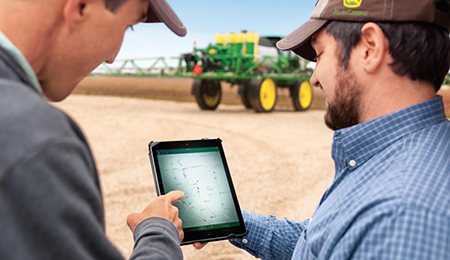 Connected Support technology
Connected Support technology
When you buy John Deere equipment, you expect reliability. You also know that problems can happen, and a product is only as good as the support behind it. That’s why John Deere equipment is prepared with technology that senses potential issues and can alert you and your dealer promptly—in the cab or anywhere you are.
John Deere Connected Support is a revolutionary change to support that leverages technology and the connectivity of JDLink™ telematics to prevent downtime and resolve problems faster. These tools decrease downtime by an average of 20 percent, enabling faster responses to unexpected problems and reducing technician trips to your machine. For some issues, unplanned downtime can even be prevented altogether through prediction of the issue.
With your permission, John Deere Connected Support:
With more than a decade of experience leveraging connectivity to solve problems, no one else has the experience, tools, and knowledge to keep you running as John Deere and your John Deere dealer can. Connected Support is an in-base feature on all John Deere products with factory- or field-installed JDLink.
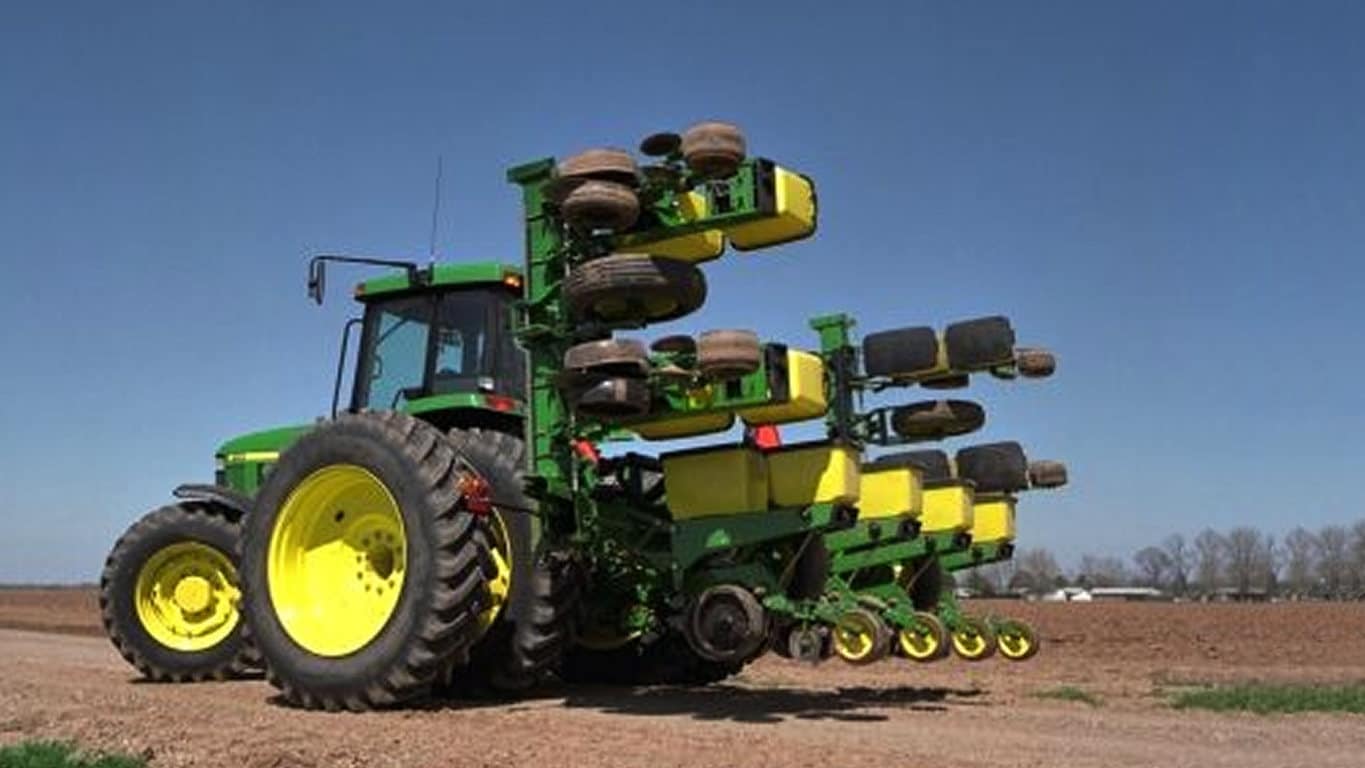
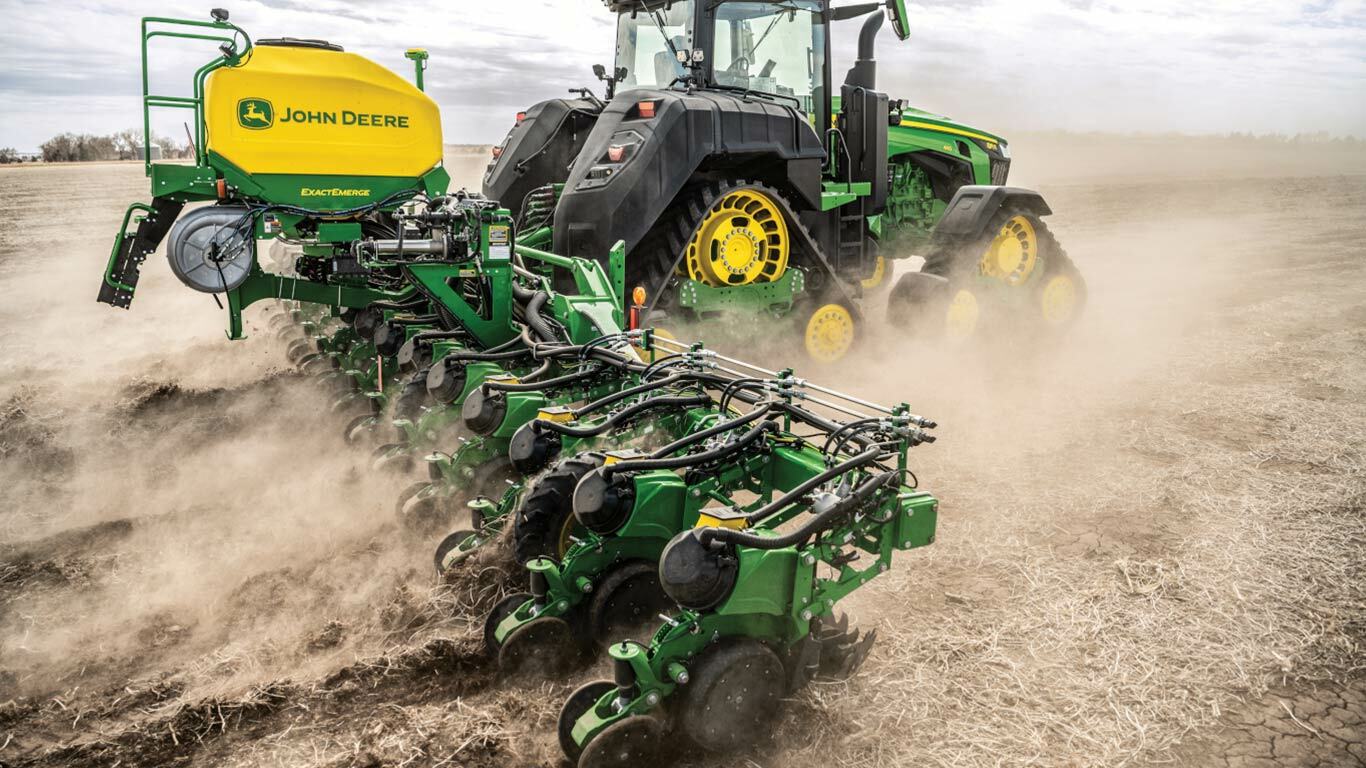
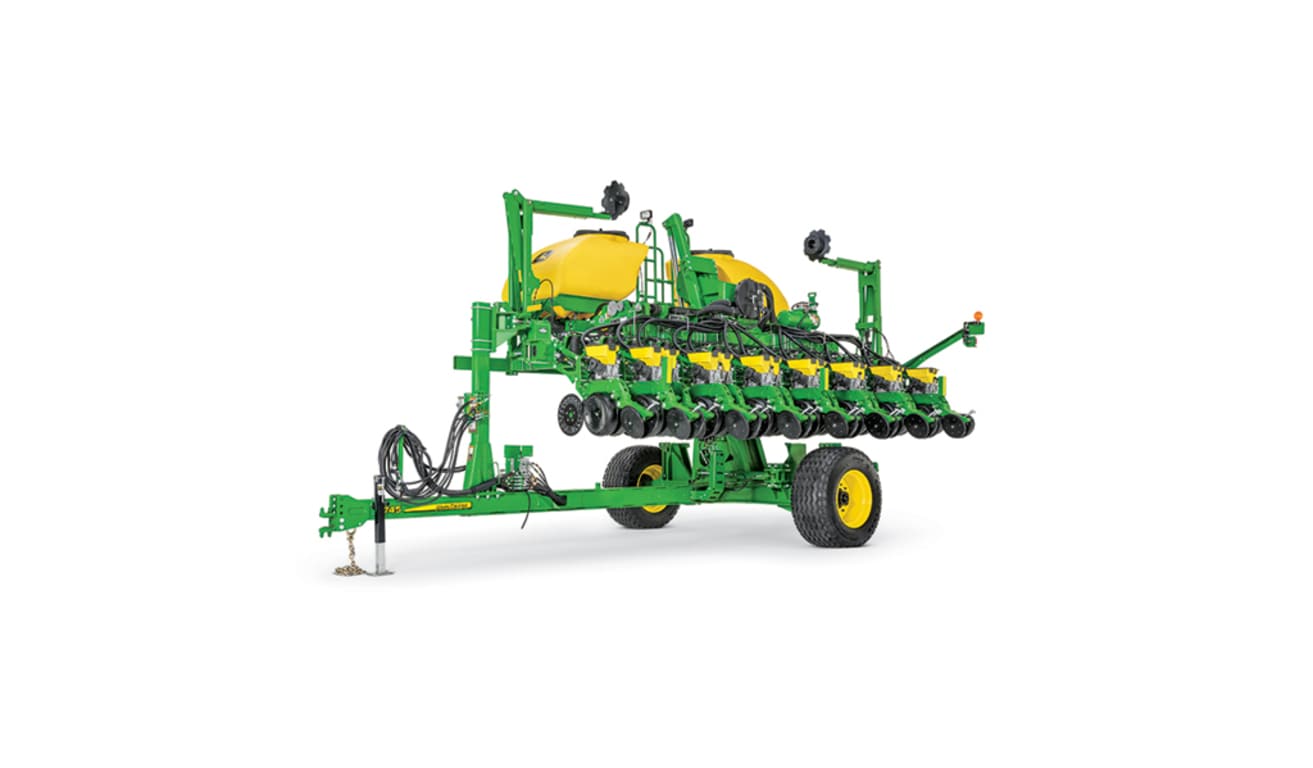
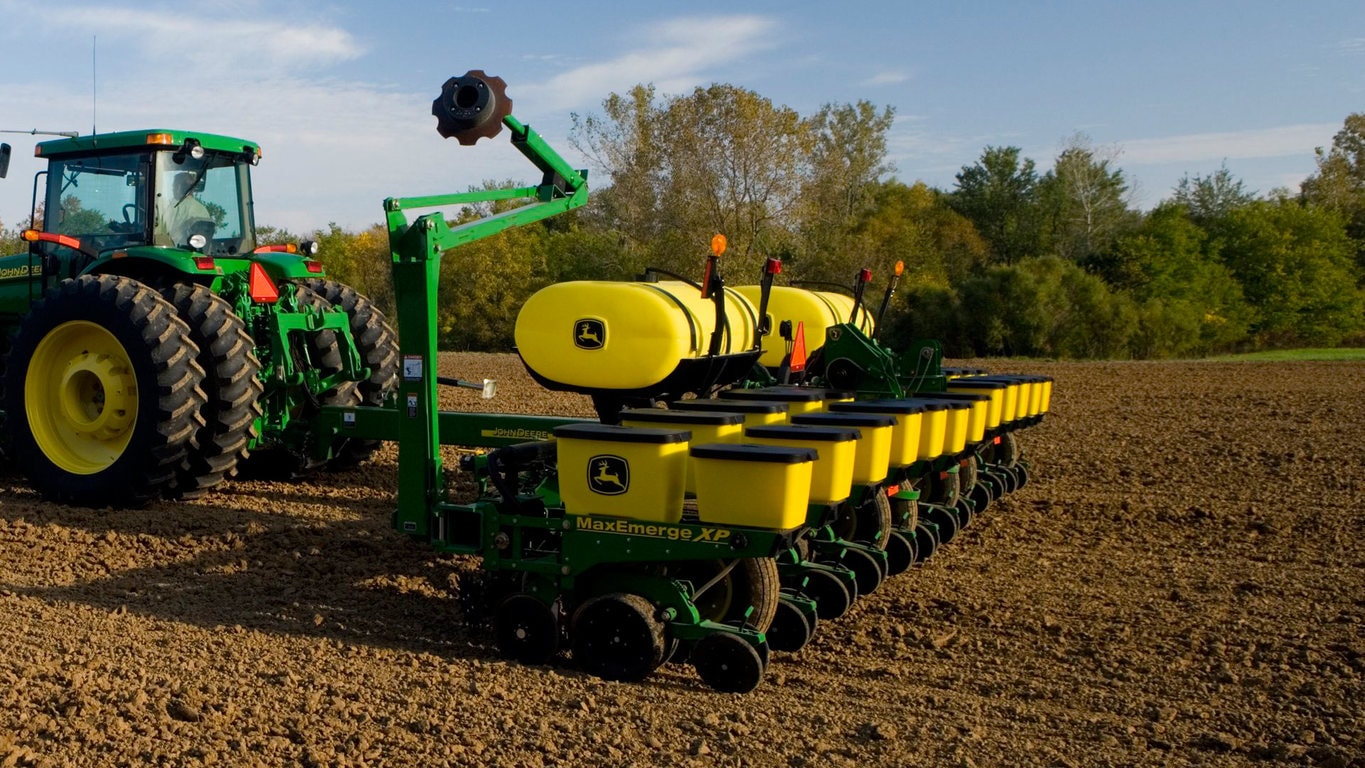
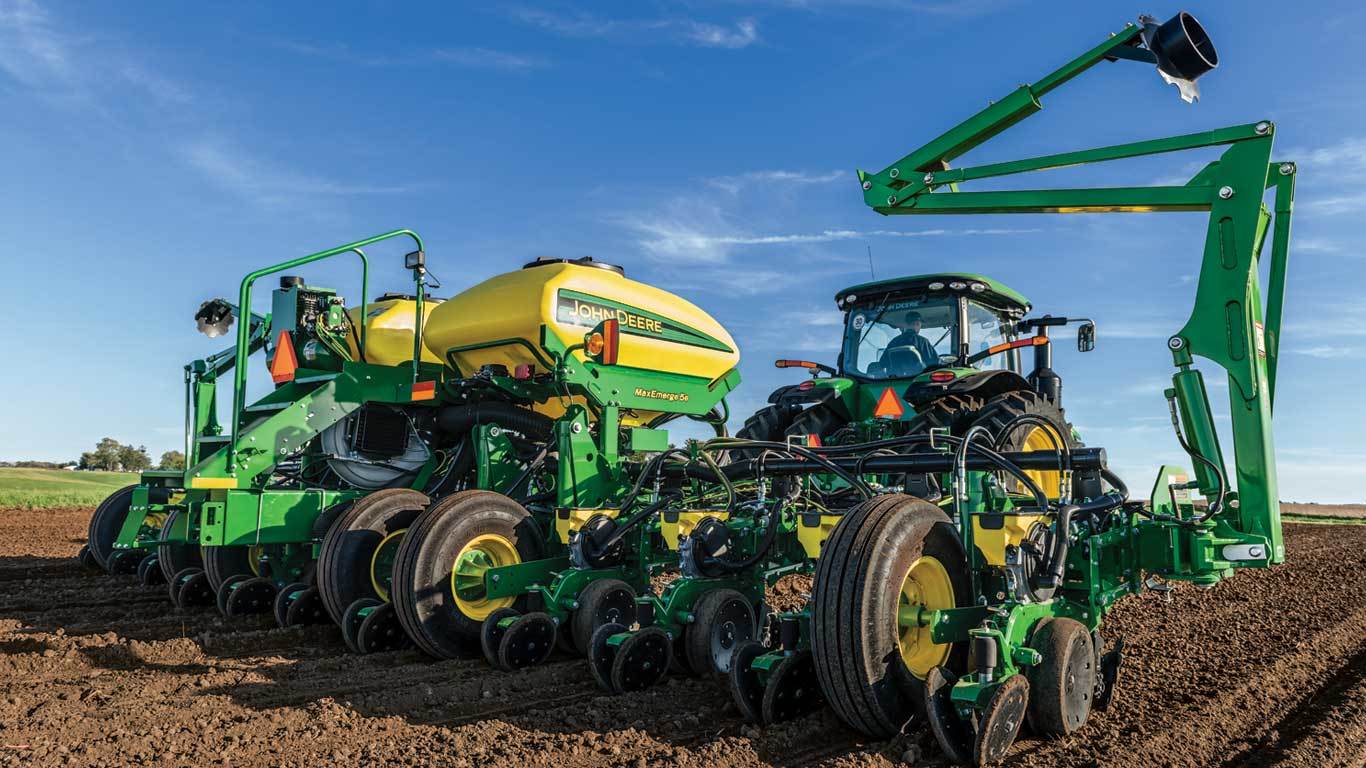
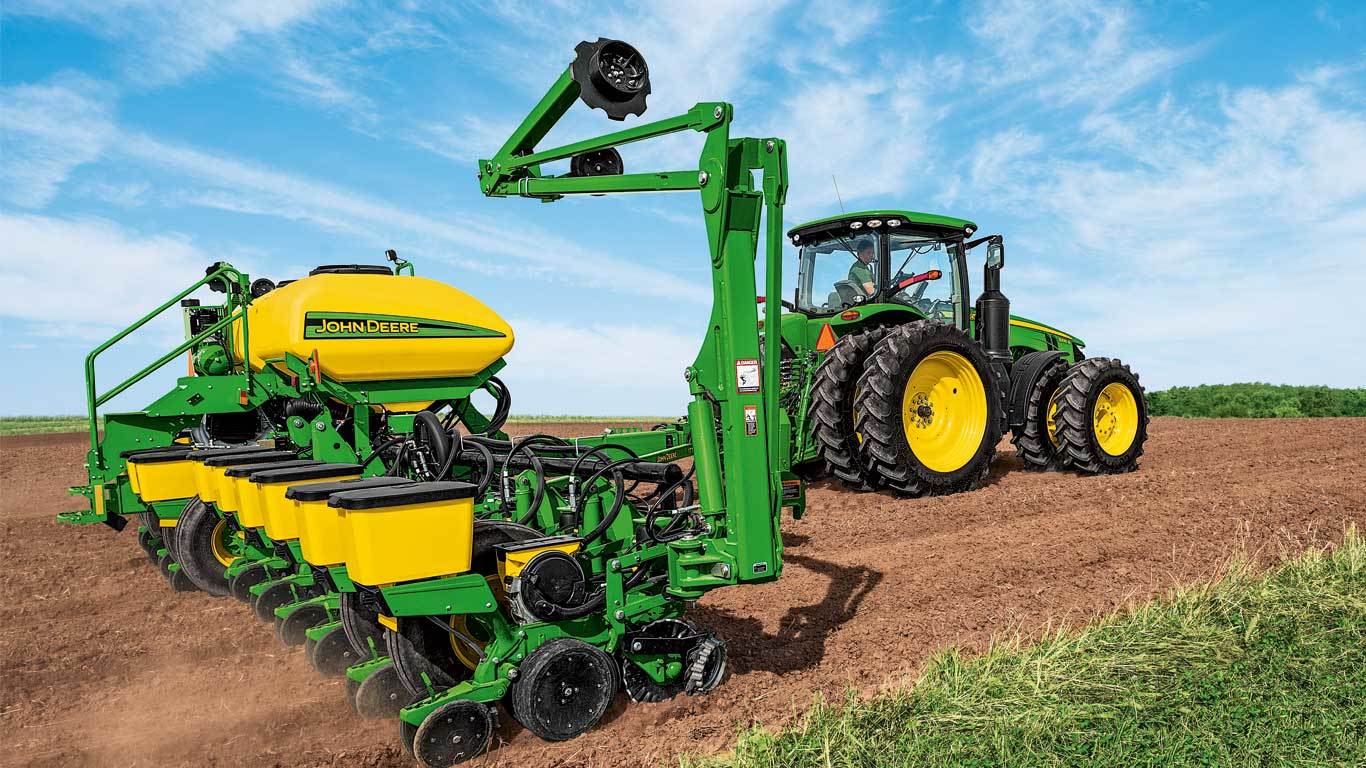
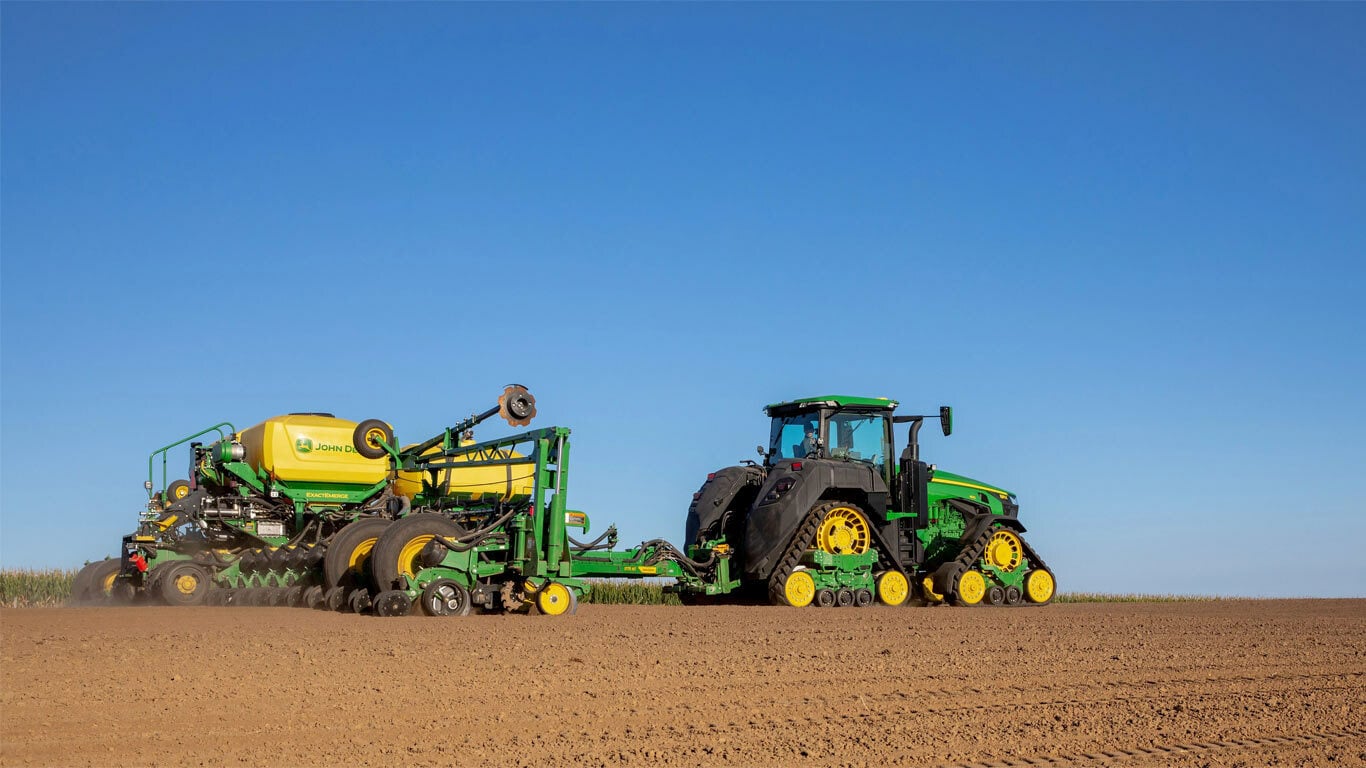
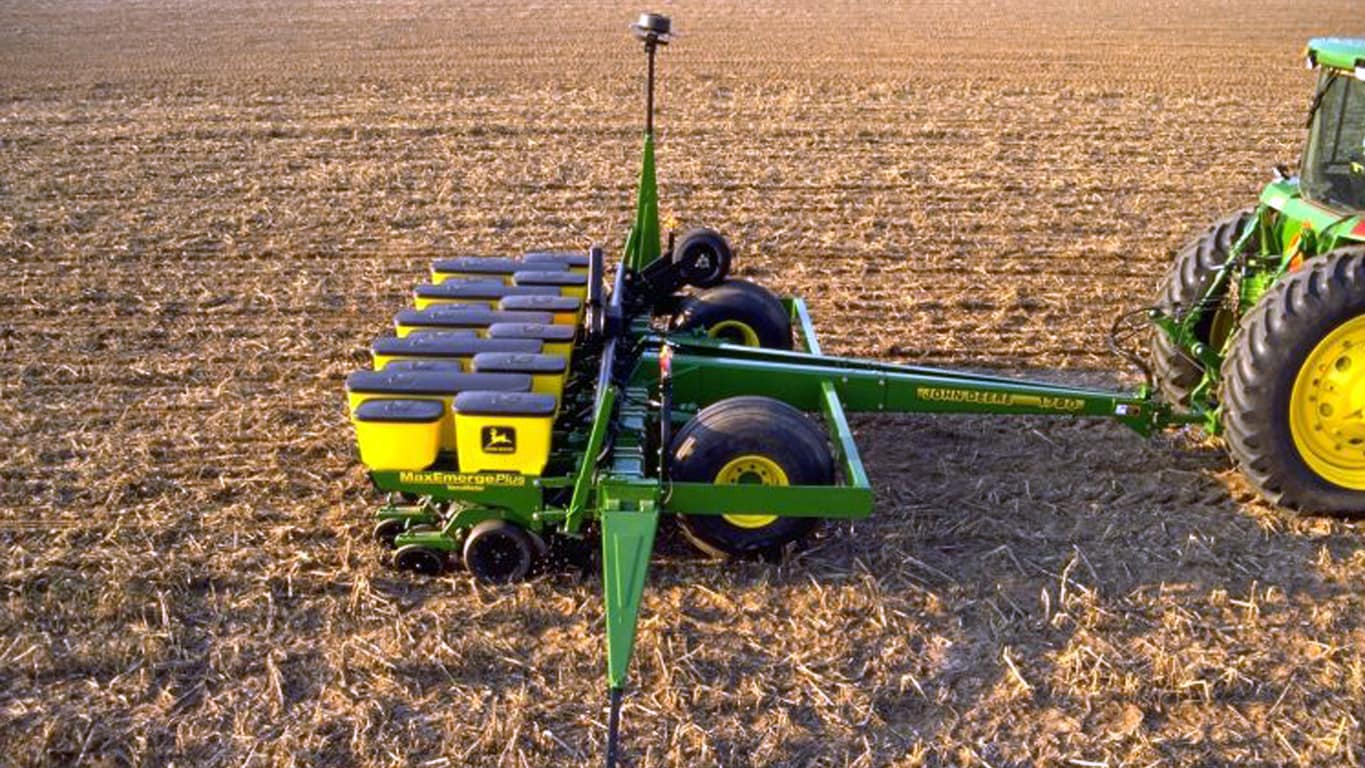
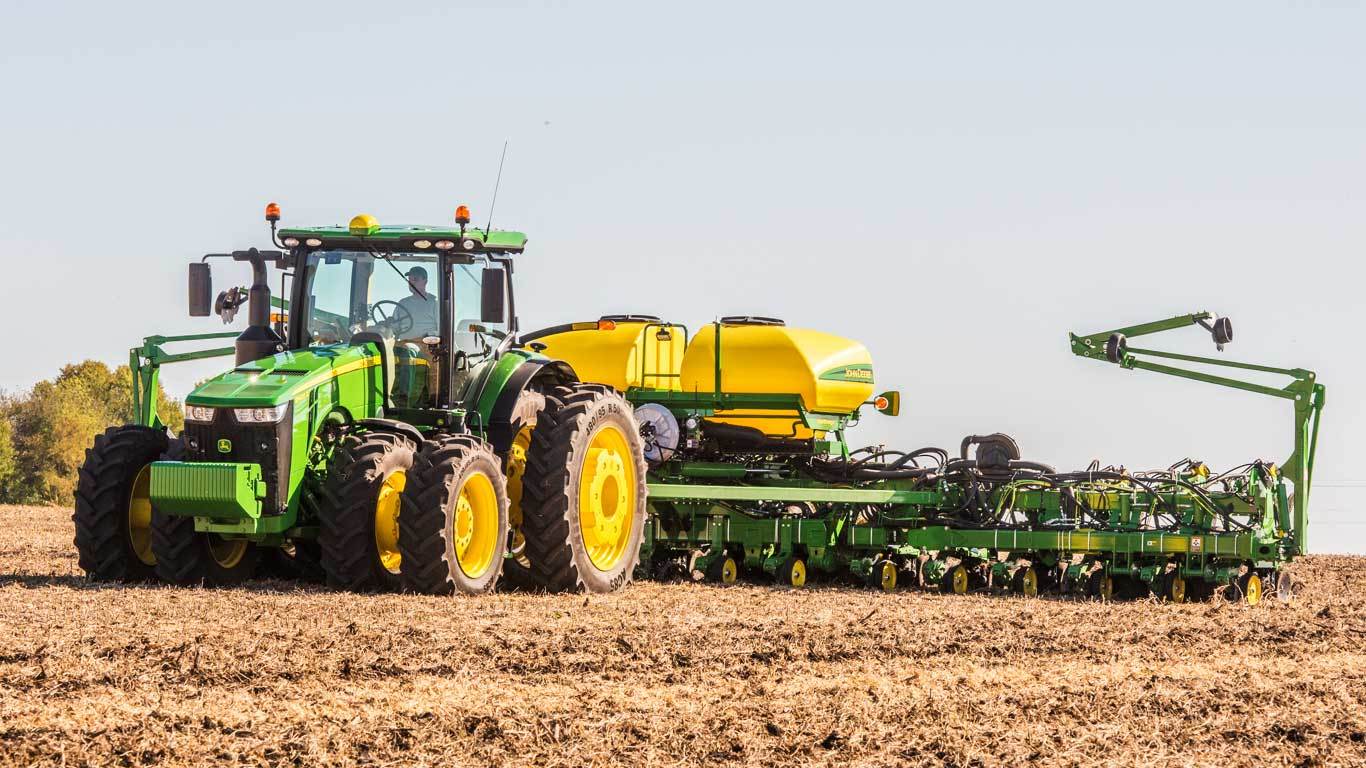
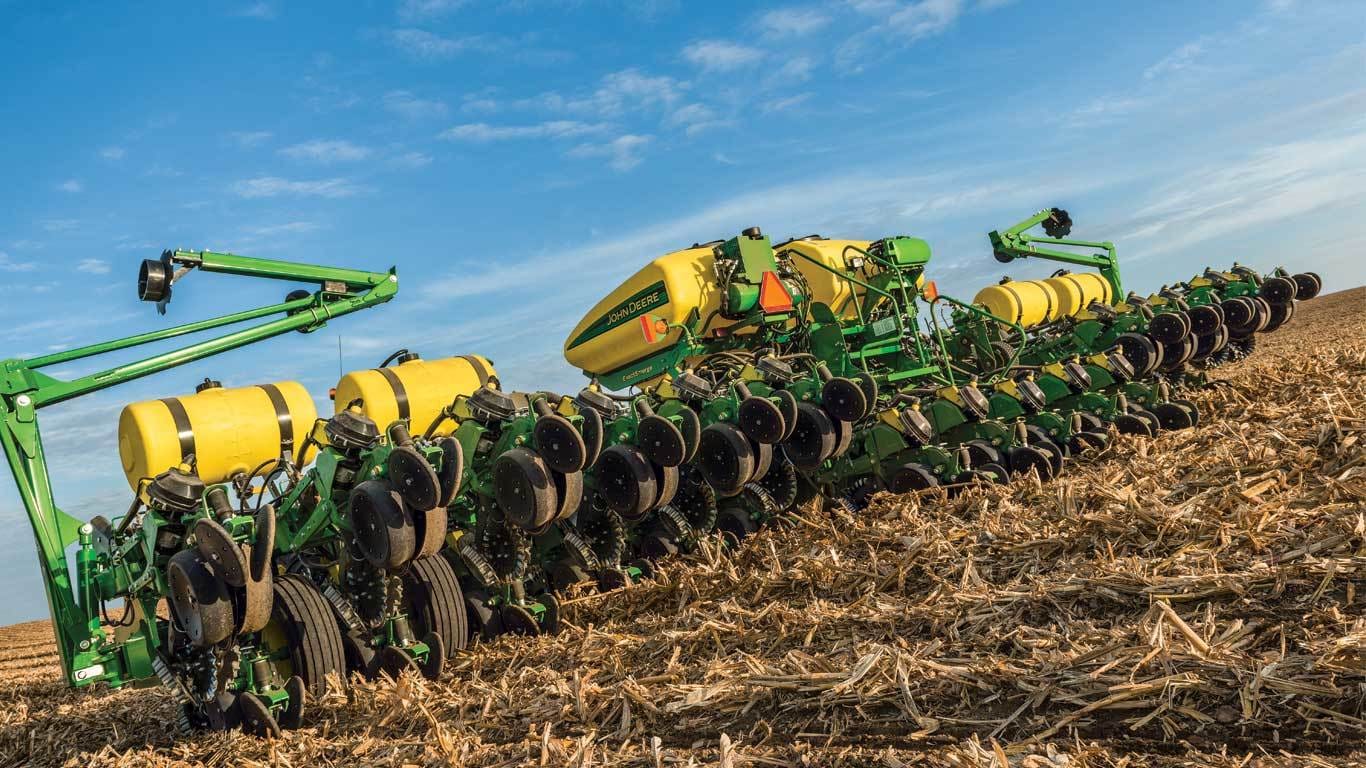
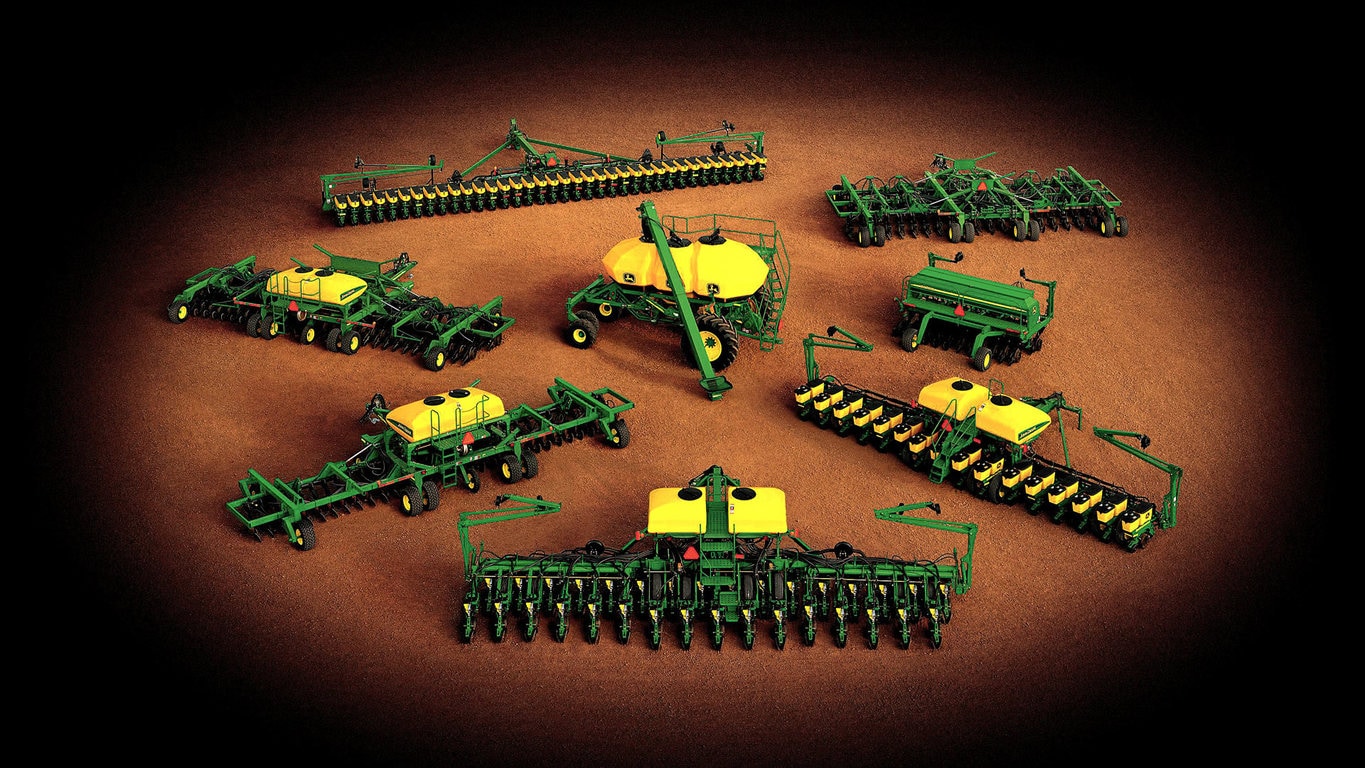
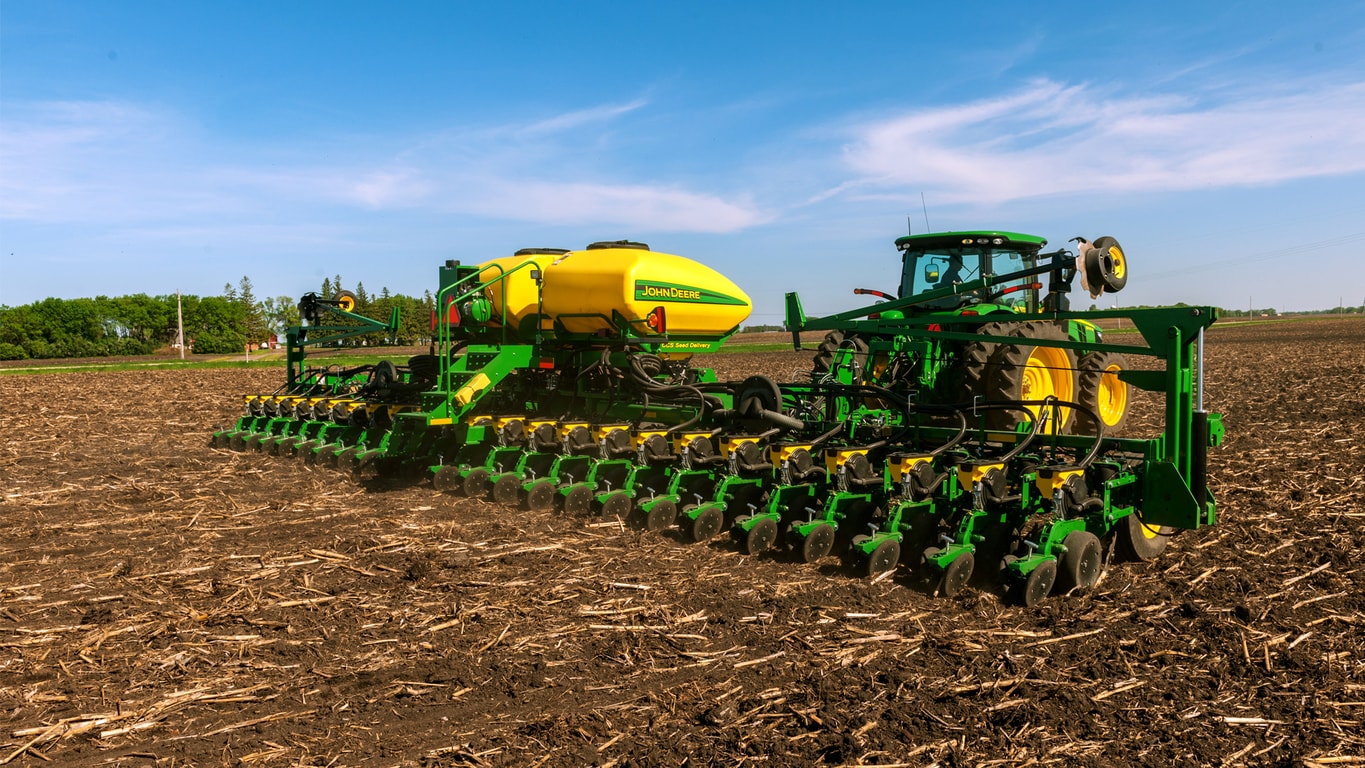
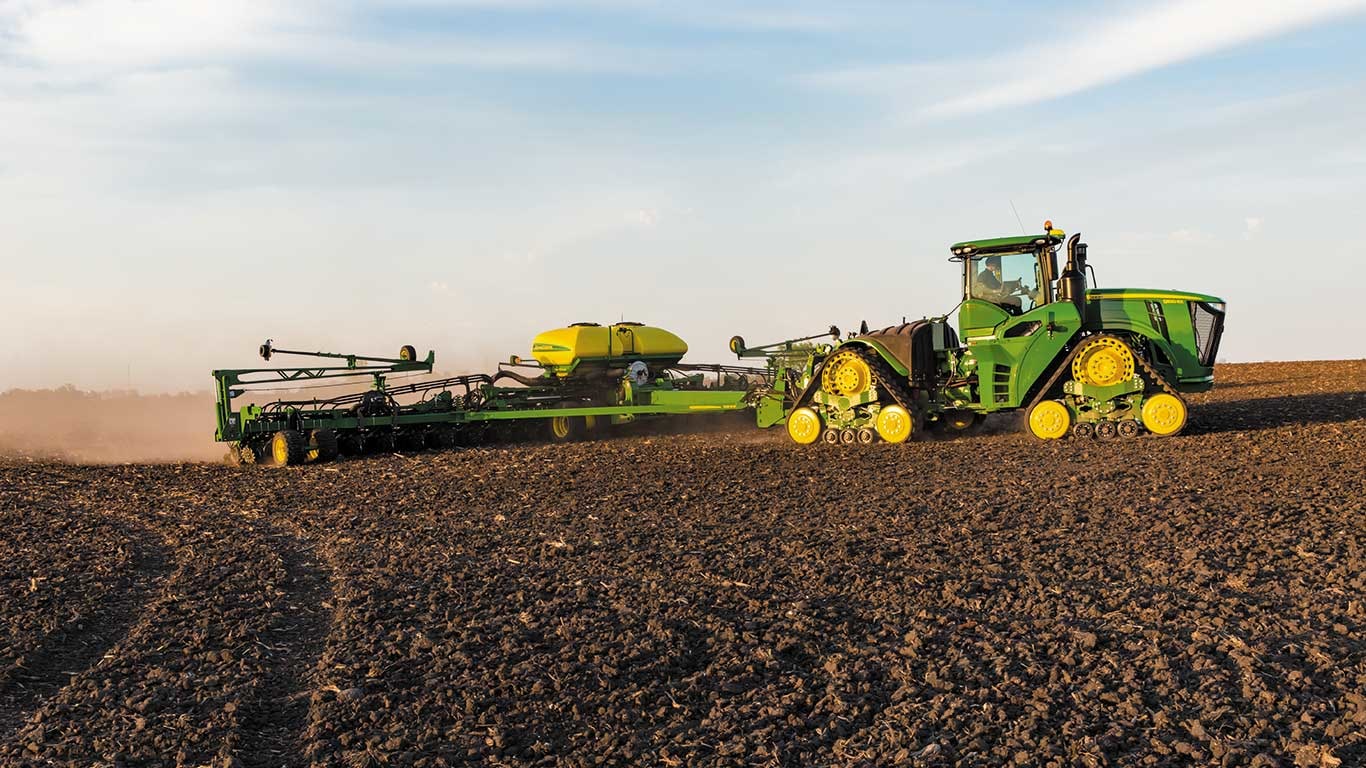
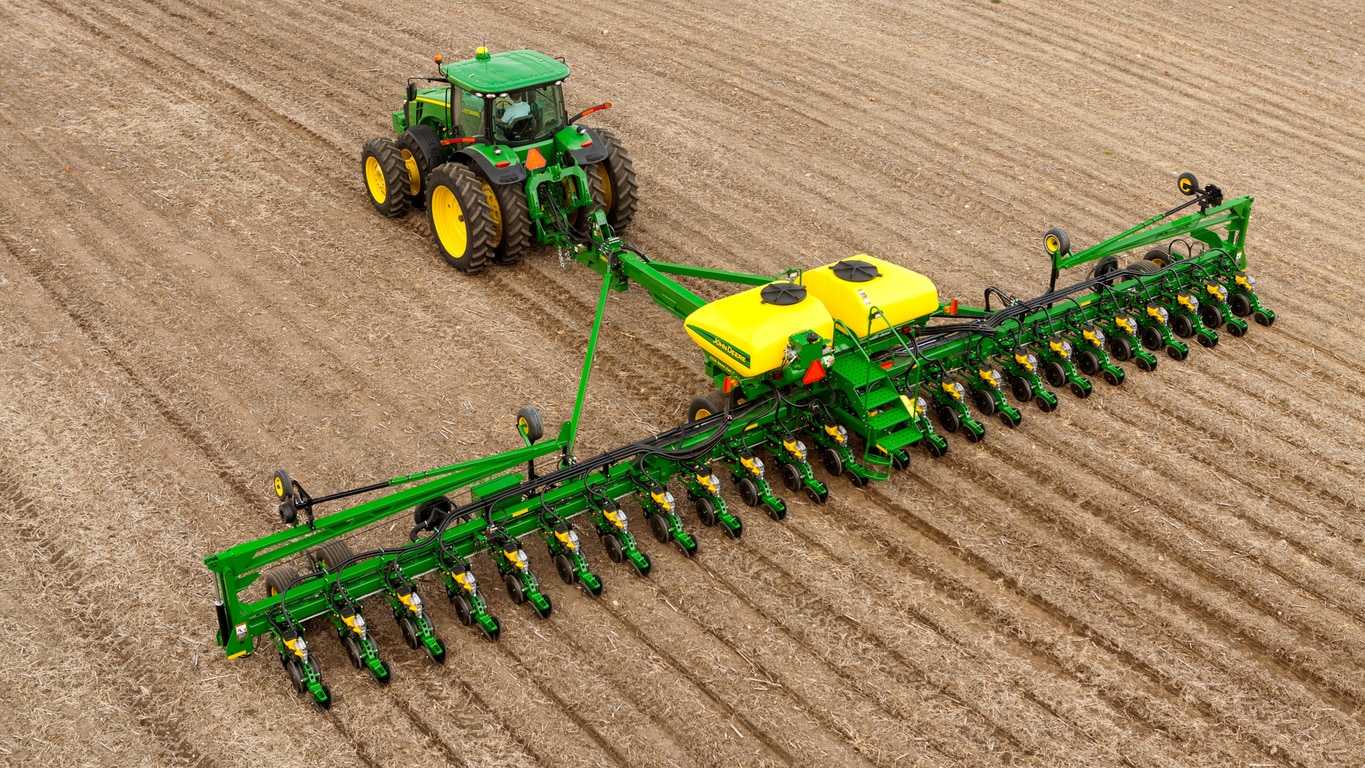

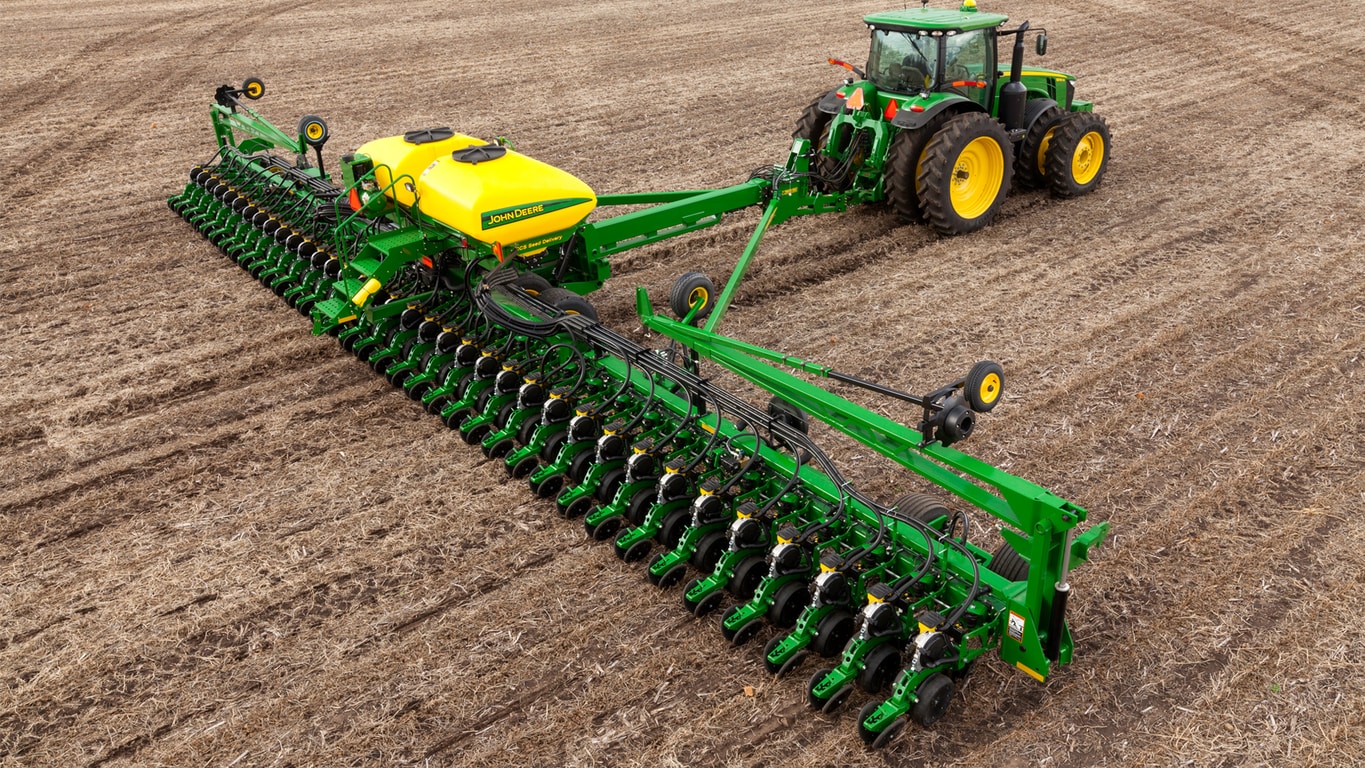
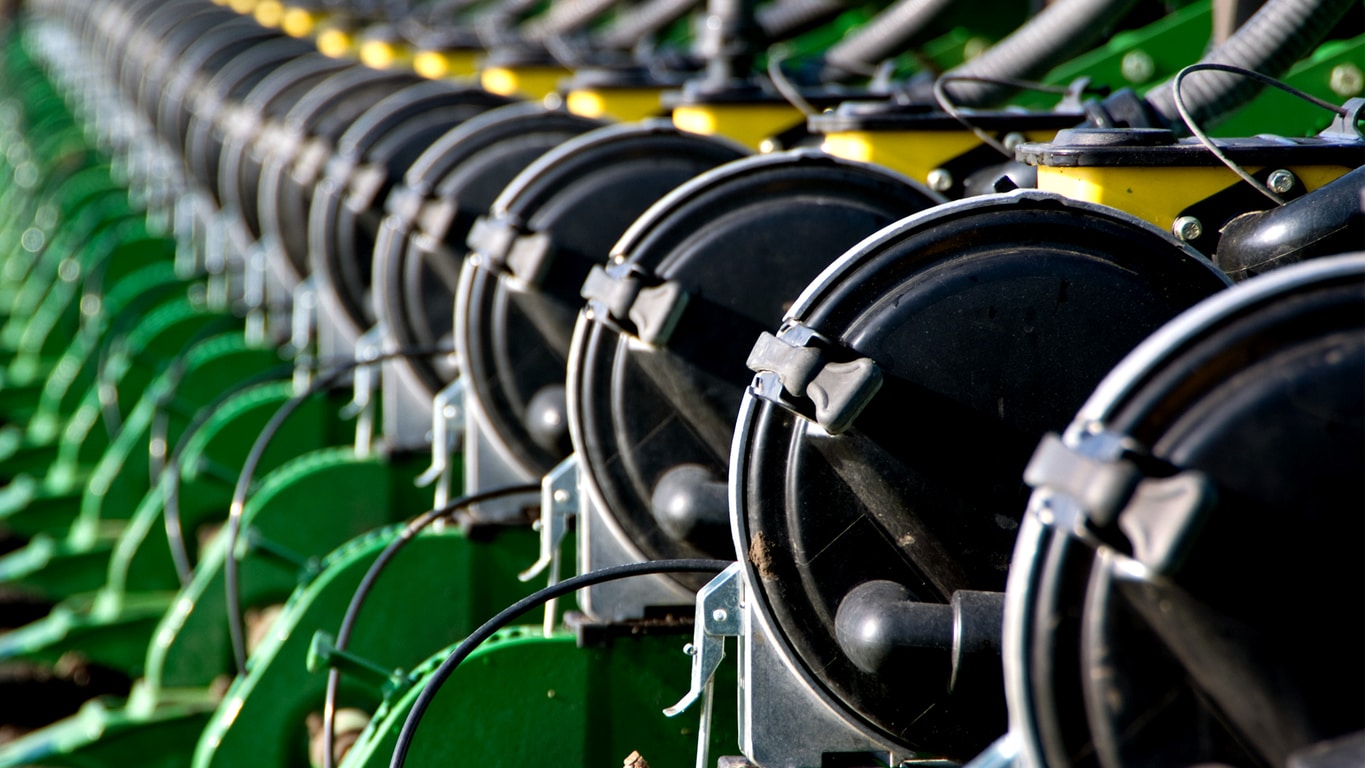

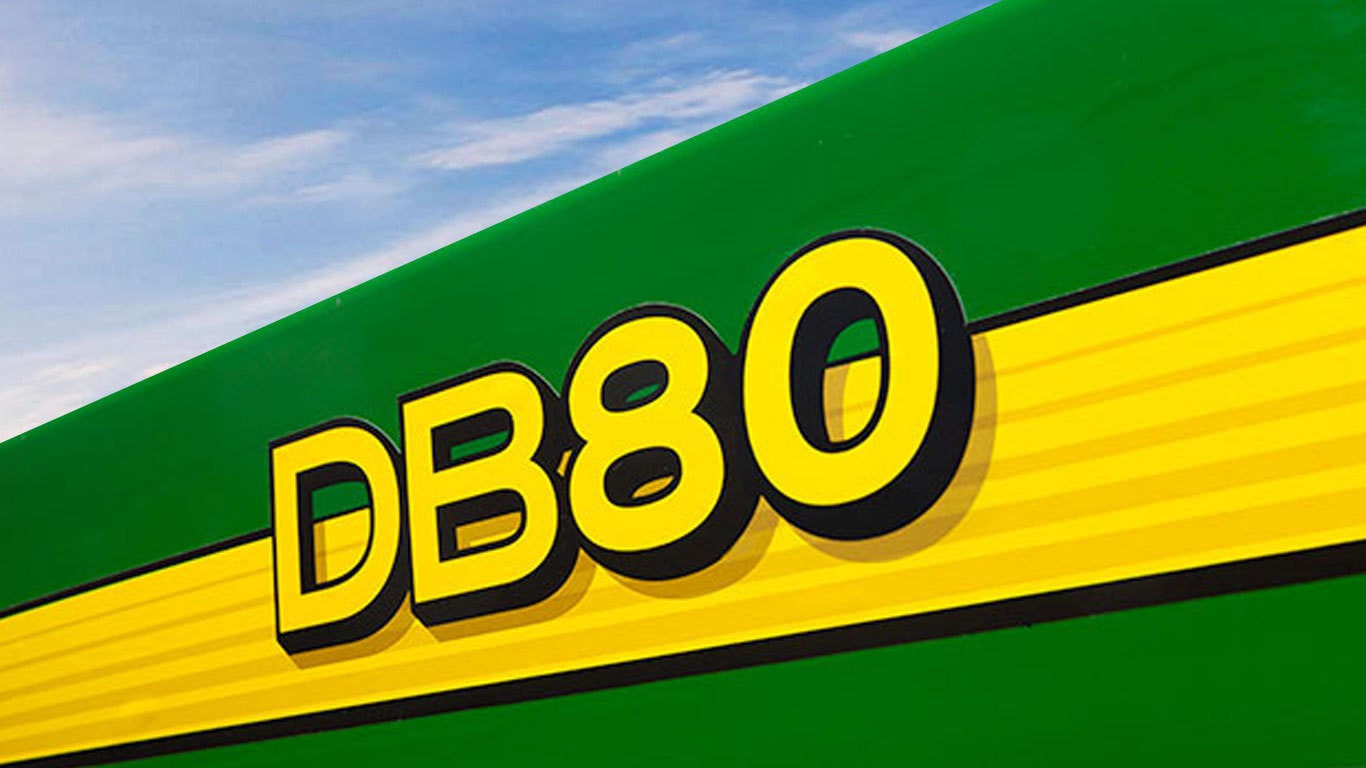
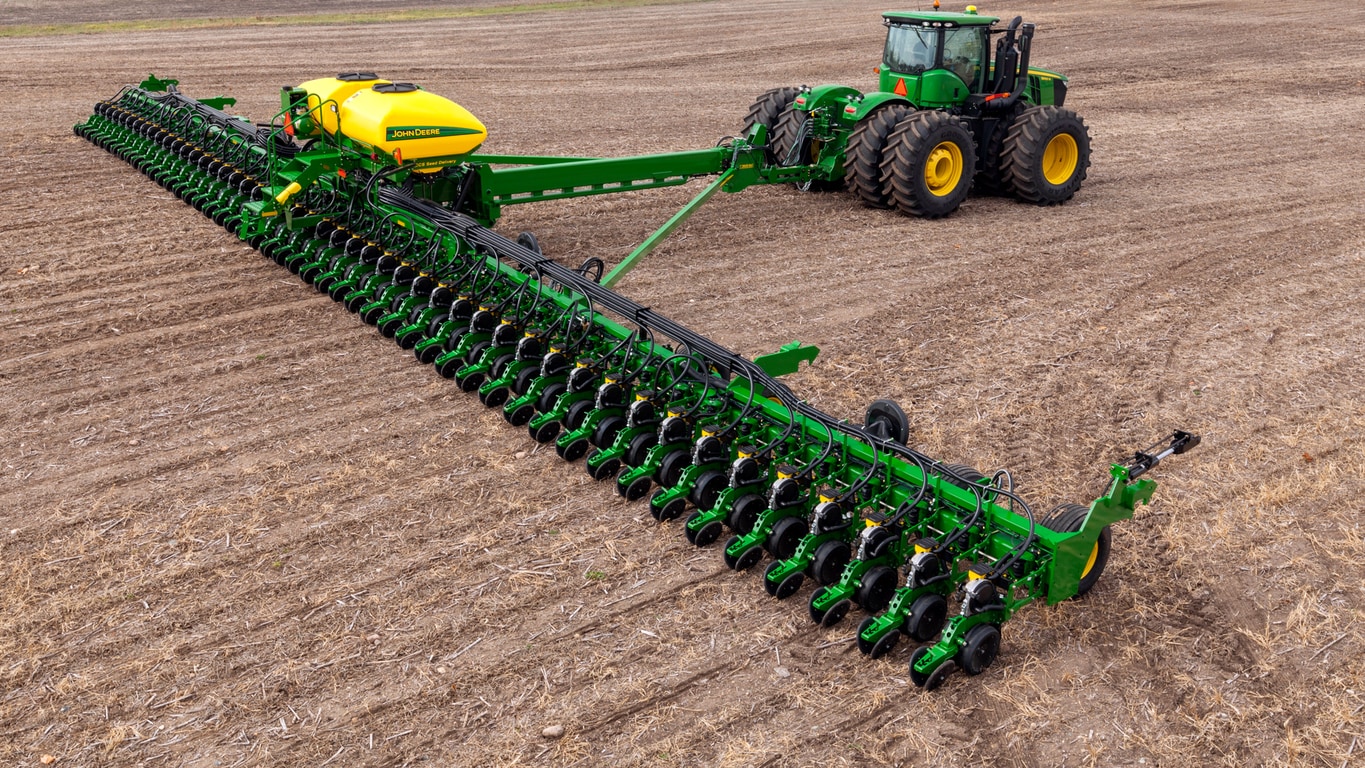
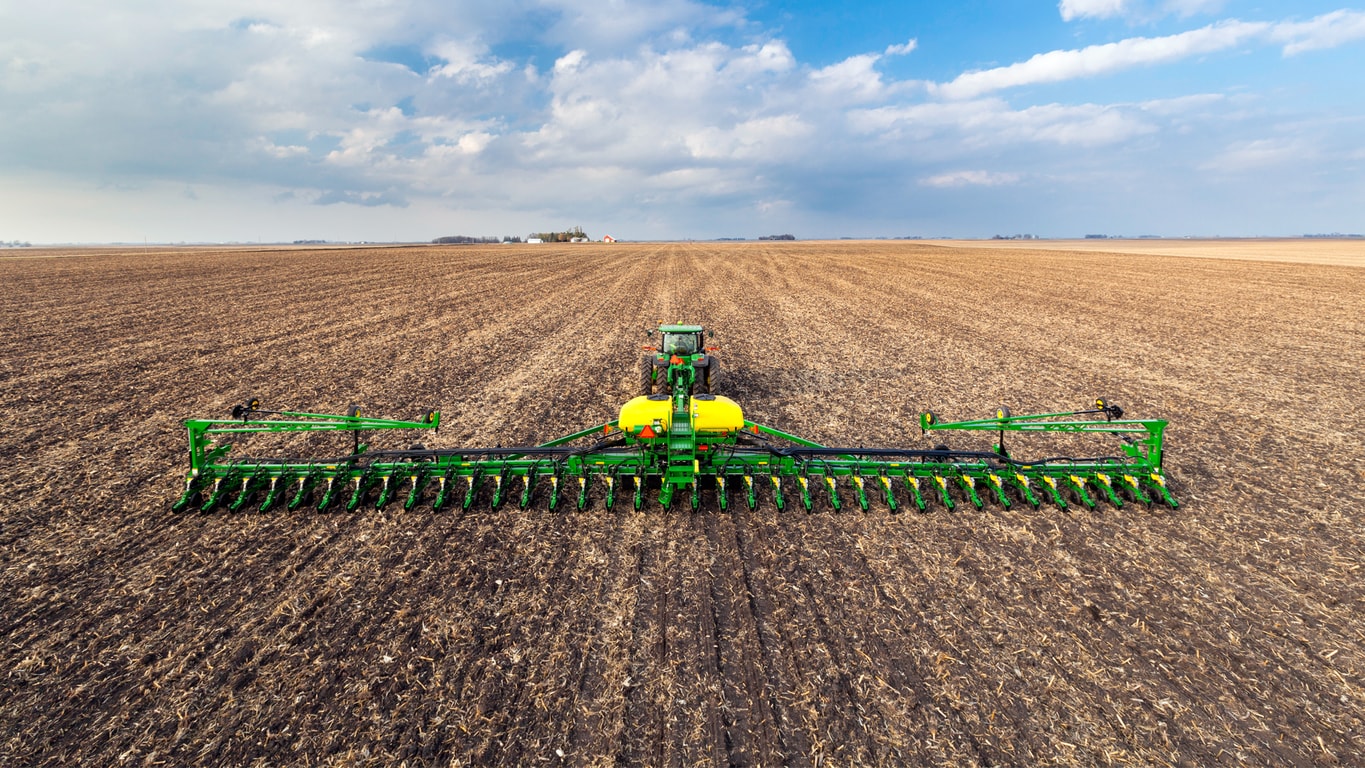
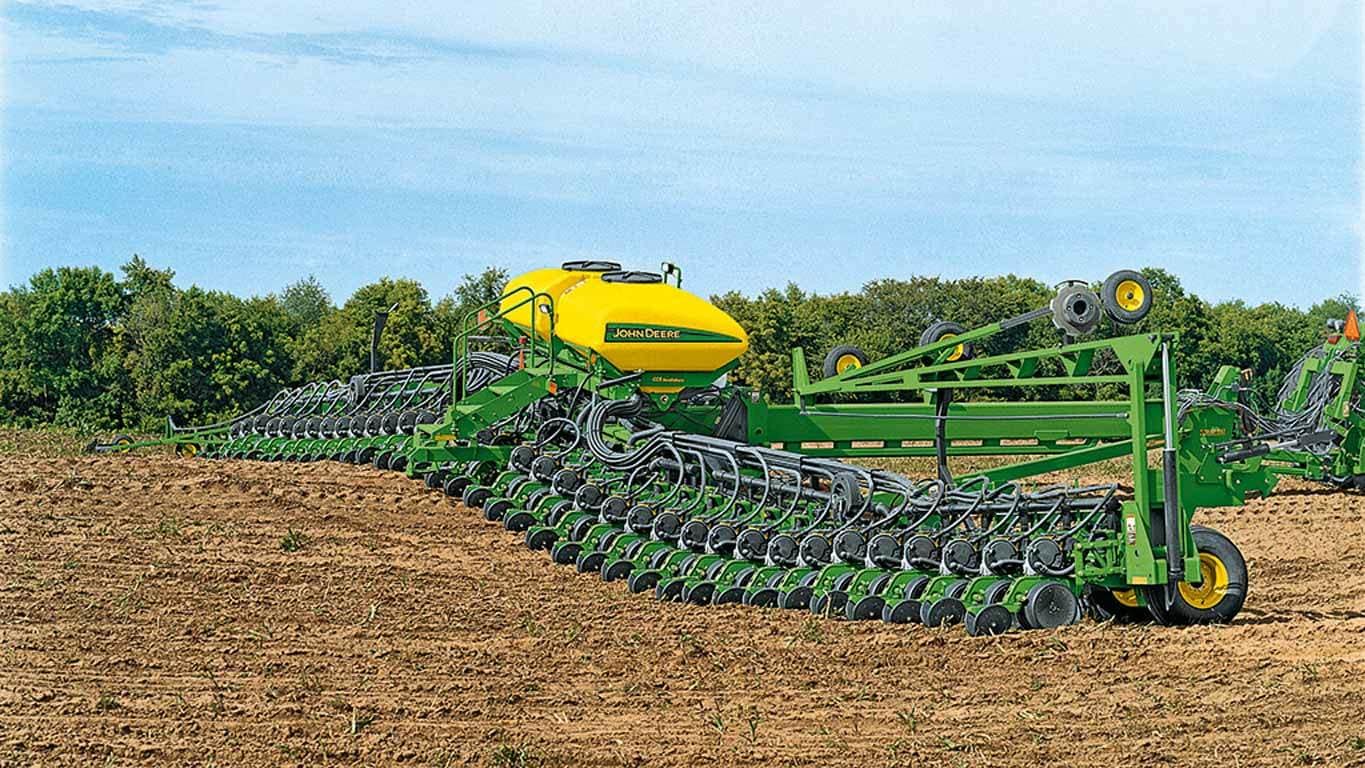
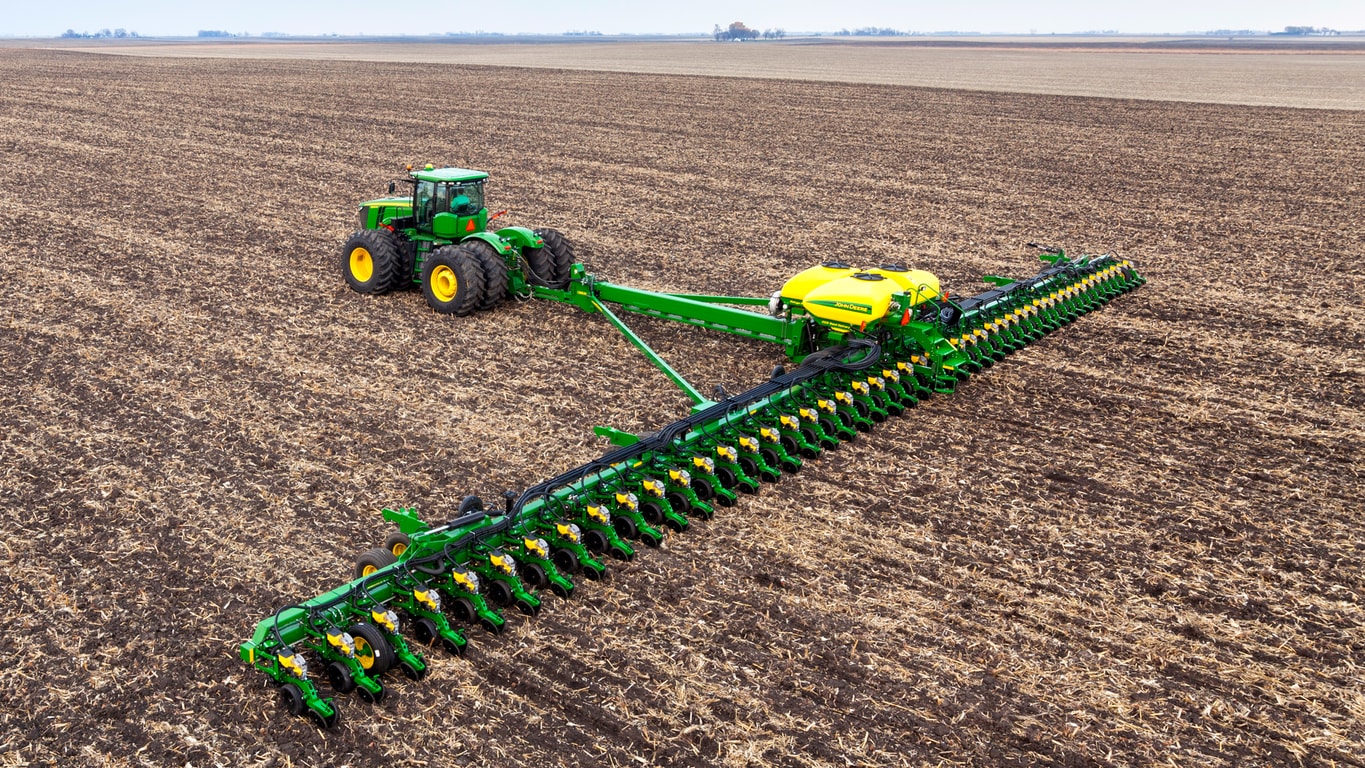
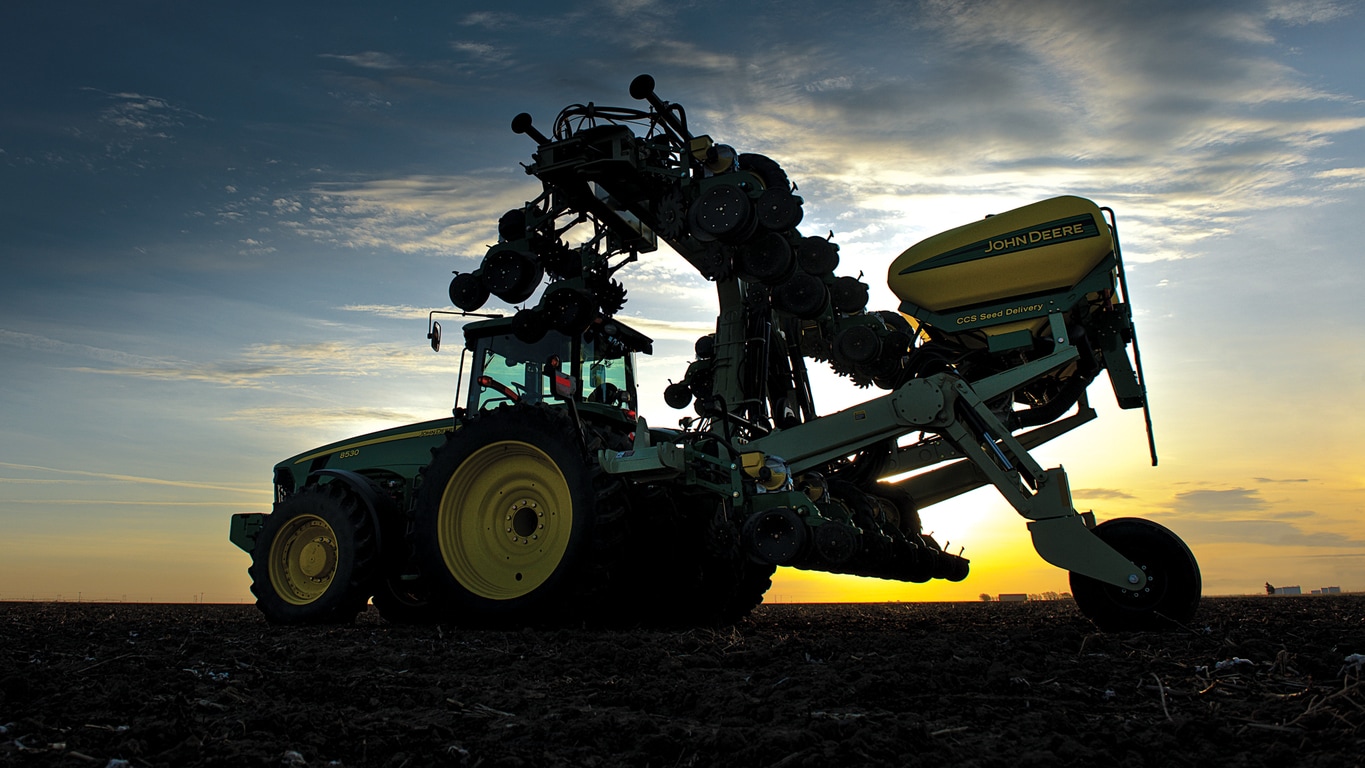
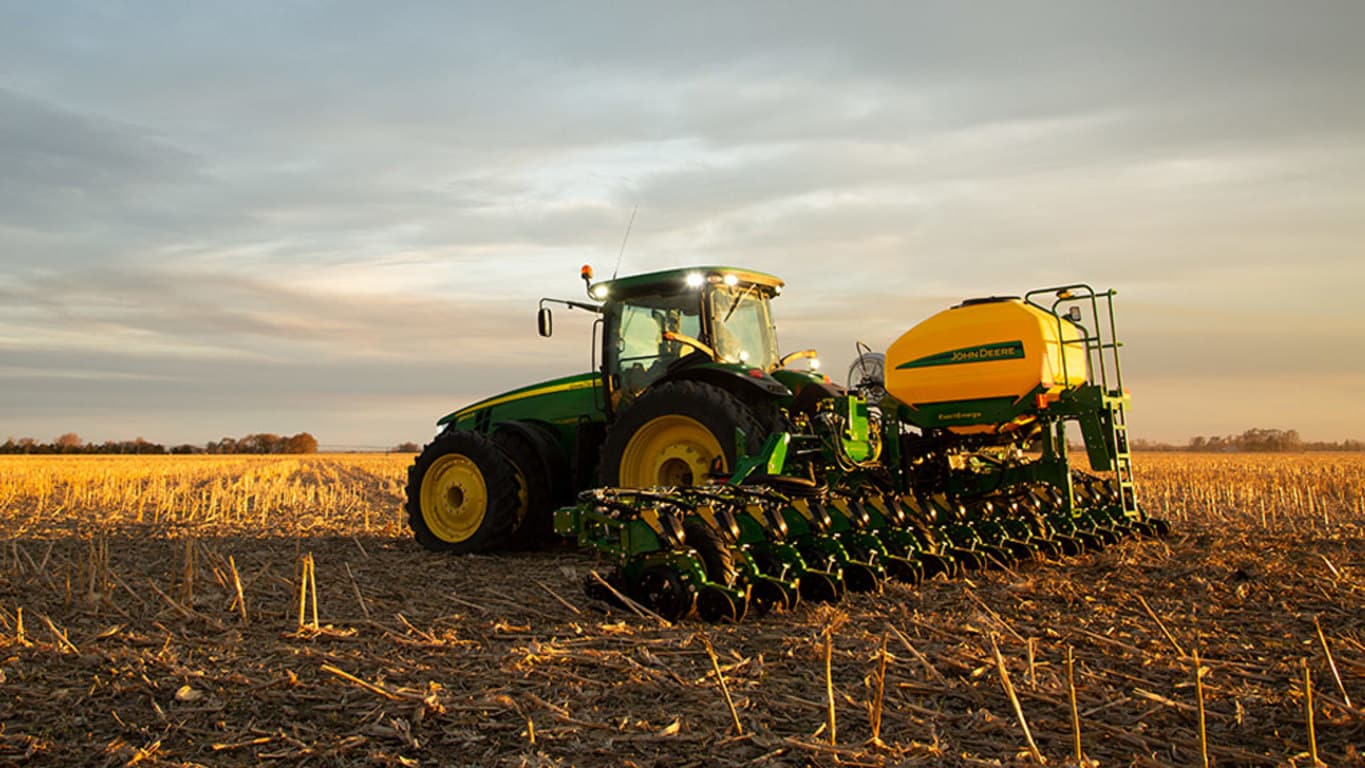
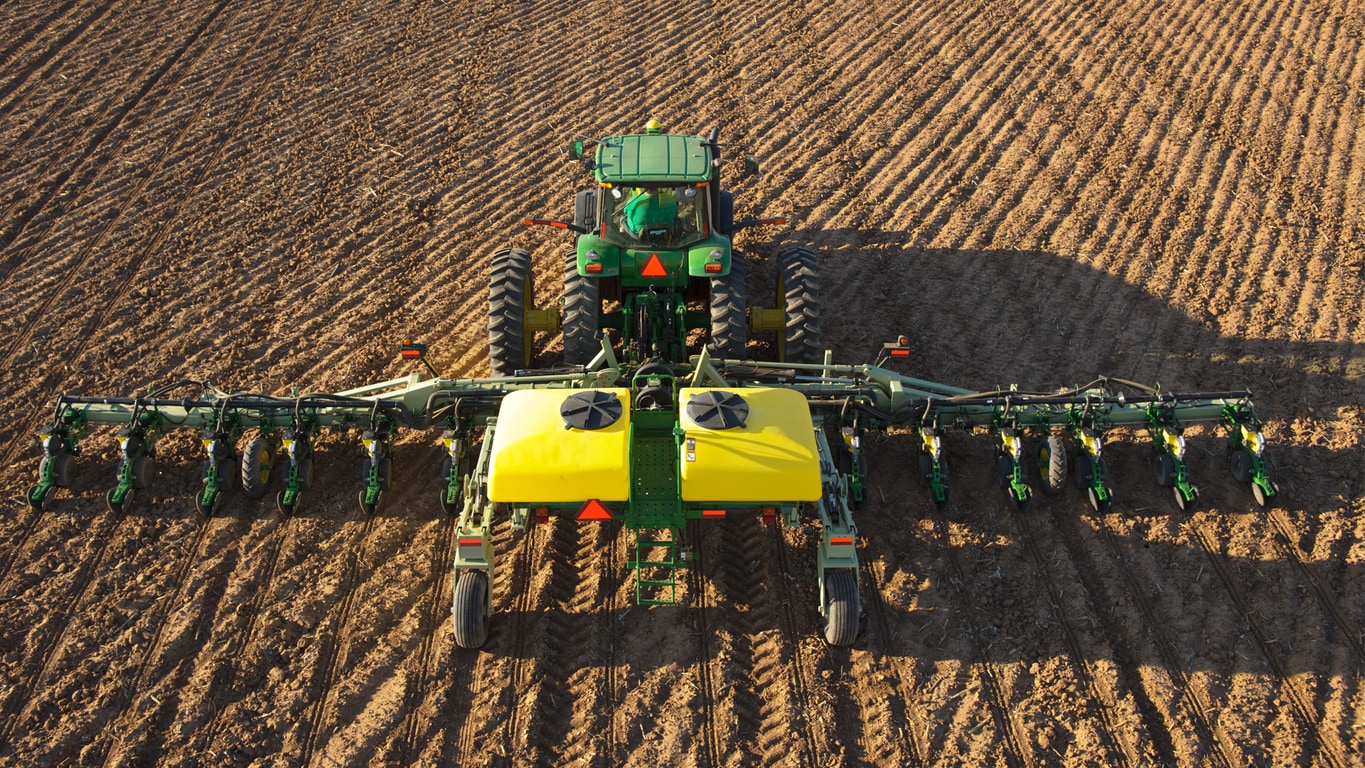
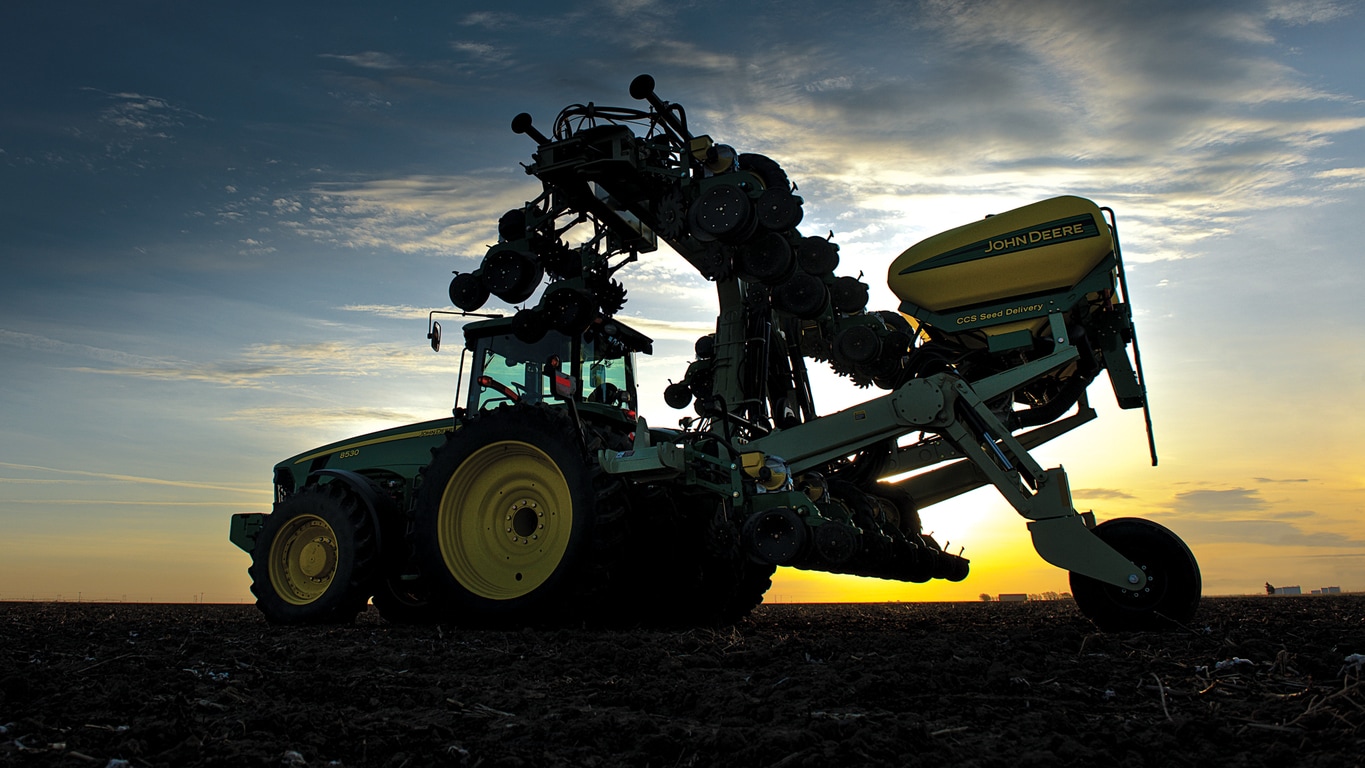
Images of equipment models may be digitally or AI generated, are for illustration purposes only, and are subject to change. Equipment models shown are typically base models and may not reflect the actual product, features, options, or attachments. Equipment availability may be limited. See your John Deere dealer for additional information.